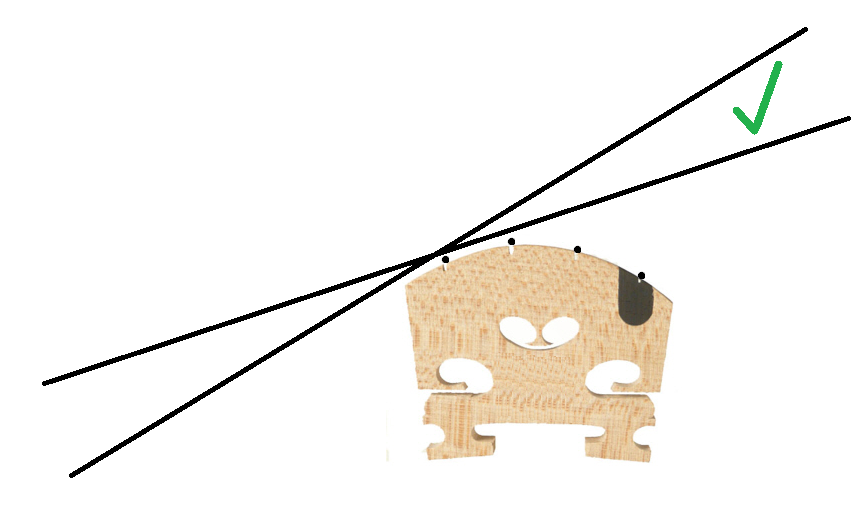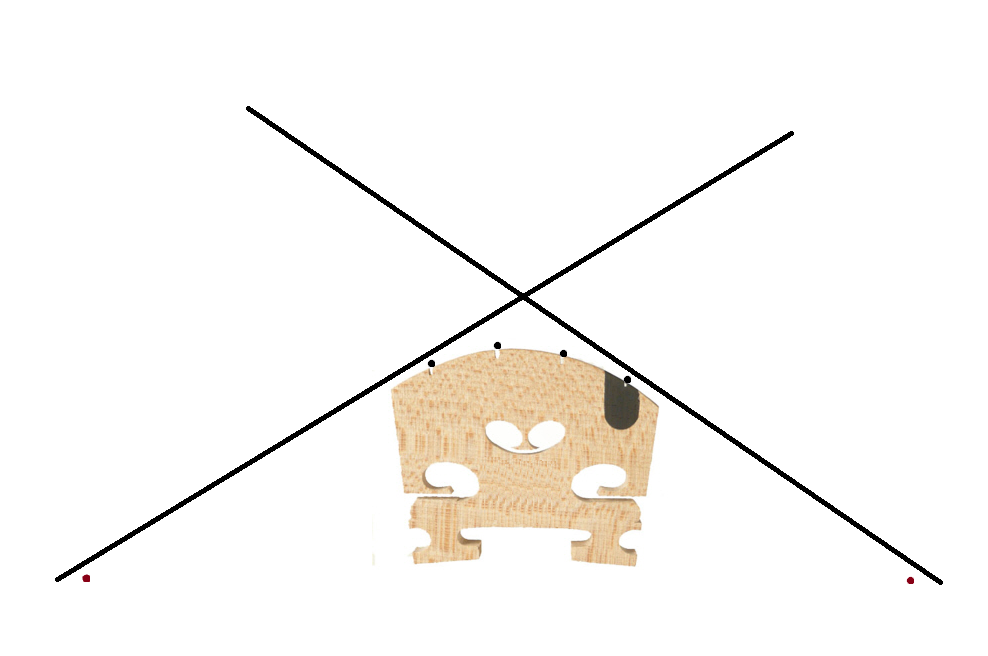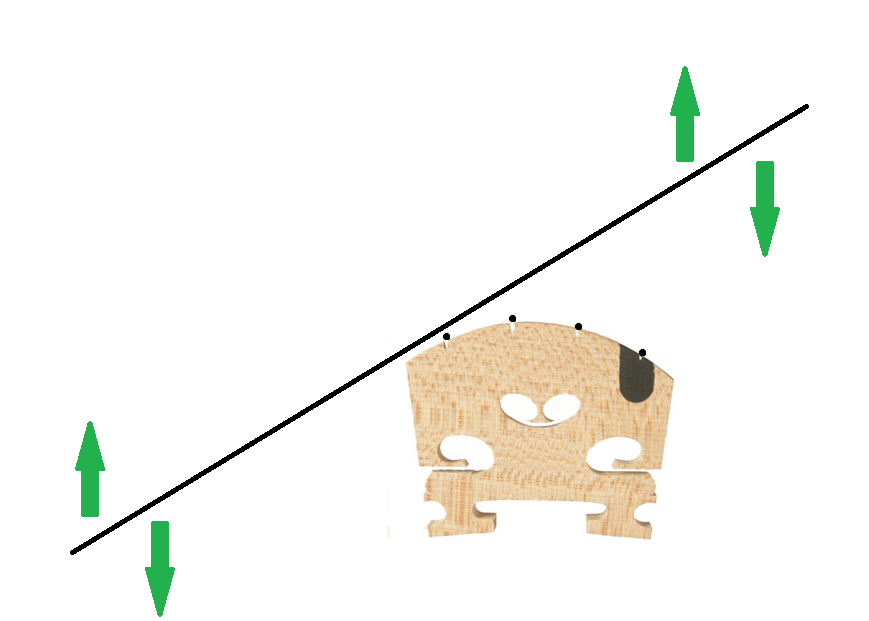Tocar el violín realizando cambios de cuerda suaves y “empastados” es una de las cuestiones estrella que casi todo ser humano que aprende las complejidades del violín ha de abordar en algún momento.
Playing the violin with smooth, blended string changes is one of the key issues that almost every human being who learns the intricacies of the violin has to address at some point.
Hay muchas razones por las que los cambios de cuerda pueden no estar siendo suaves y agradables. Hoy escribiré sobre una de ellas: el rango del arco, un aspecto interesante que puede ser de ayuda para que los cambios de cuerda resulten más suaves, sonoramente más satisfactorios y agradables para uno mismo.
There are many reasons why string changes may not be smooth and enjoyable. Today I’ll write about one of them: bow range, an interesting aspect that can help make string changes smoother, more satisfying on the sound aspect, and more enjoyable for you.
¿A qué llamo el rango de amplitud del arco sobre una cuerda?
What do I call the range of amplitude of the bow on a string?

El rango de amplitud del arco sobre una cuerda es la distancia que puedo levantar o bajar el brazo con el que sujeto el arco apoyado sobre una cuerda sin que toque el cuerpo del violín o la cuerda vecina.
The range of the bow’s amplitude over a string is the distance that I can raise or lower my bow arm over a string without it touching the body of the violin or the neighboring string.
Una misma cuerda la podemos tocar en zonas diferentes del rango de esa cuerda, más cercana a su lado externo o más cercana hacia su lado interno.
We can play the same string in different areas of its range, closer to its outer side or closer to its inner side.
Las cuerdas Sol y Mi en el violín tienen como lados externos el cuerpo del violín y como lados internos sus cuerdas vecinas Re y La respectivamente.
The G and E strings on the violin have the body of the violin as their outer sides and their neighboring D and A strings as their inner sides respectively.

Si tenemos en cuenta que cambiar de cuerda en el violín es un proceso complejo de modificación de la postura en un espacio muy reducido de tiempo, nos interesará poder realizar ese movimiento lo más ágil y rápidamente posible.
Considering that changing strings on the violin is a complex process of changing posture in a very short period of time, we’ll want to be able to perform this movement as quickly and easily as possible.
Si la distancia a cambiar es más pequeña, nos llevará menor tiempo realizar el cambio de una cuerda a la otra y el movimiento del brazo será pequeño. Si la distancia es mayor nos llevará más tiempo y el movimiento del brazo será mayor.
If the distance to be changed is shorter, it will take less time to change from one string to the other, and the arm movement will be smaller. If the distance is greater, it will take longer, and the arm movement will be bigger.
Si quieres saber el rango en tu violin, puedes colocar tu arco en cualquier cuerda, sin moverlo, apoyado sobre la cuerda y observar el puente con tu mirada. A continuación inclinas el arco hacia un lado hasta que esté a un milímetro de estar en contacto con la cuerda vecina y luego hacer el movimiento contrario hasta que esté a un milímetro de estar en contacto con la otra cuerda vecina (o el cuerpo del violín si hablamos de las cuerdas Mi y Sol). Ese es tu rango, la distancia que hay entre esos dos puntos.
If you want to know the range on your violin, you can place your bow on any string, without moving it, resting it on the string and look at the bridge with your eyes. Next, you tilt the bow to one side until it is one millimeter from touching the neighboring string, and then do the opposite movement until it is one millimeter from touching the other neighboring string (or the body of the violin if we are talking about the E and G strings). That is your range, the distance between those two points.
Es aquí donde el rango juega un papel muy importante en el cambio de cuerda:
This is where range plays a very important role in string changing:

Si yo estoy tocando en la cuerda re por ejemplo, y en unas pocas notas cambiaré a la cuerda la, es interesante que modifique mi rango para acercarme lo máximo posible a la cuerda la y que el cambio de cuerda sea lo más pequeño posible.
If I’m playing on the D string, for example, and after a few notes I’m going to change to the A string, it’s interesting to modify my range to get as close as possible to the A string and to make the string change as small as possible.
Cuanto más pequeña sea la distancia a la que me encuentre de la cuerda vecina a la que me dirijo, menos movimiento tendré que hacer y por tanto más posibilidades de un cambio de cuerda suave tendré.
The smaller the distance I am from the neighboring string I’m heading towards, the less movement I’ll have to make and therefore the more likely I am to make a smooth string change.
Dos ejercicios sugeridos para practicar esto son:
Two suggested exercises to practice this are:
Cambio de cuerda a cuerda vecina cercana: practicar eligiendo dos cuerdas libres (o un intervalo entre dos notas en cuerdas diferentes pero vecinas) y experimentar usando un rango muy pequeño en el cambio, usando un rango intermedio y usando un rango muy grande. Se coloca el arco sobre la cuerda en quietud, se mueve unos pocos centímetros, se cambia de cuerda usando el rango elegido y se tocan otros pocos centímetros, observando todo el proceso con la mirada en el puente.
Changing a string to a nearby neighboring string: Practice by choosing two open strings (or an interval between two notes on different but neighboring strings) and experiment with using a very small range, an intermediate range, and a very large range. Place the bow on the stationary string, move it a few inches, change the string using the chosen range, and play another few inches, observing the entire process with your eyes on the bridge.
Cambio de cuerda a cuerda lejana: el mismo ejercicio de antes, pero entre cuerdas que no son vecinas, como sol – la, sol – mi y re – mi.
Changing from a string to a distant string: the same exercise as before, but between strings that are not neighboring, such as G – A, G – E, and D – E.
Aprender a emplear diferentes rangos al tocar, puede ayudarte enormemente a que tus cambios de arco resulten más suaves e imperceptibles. Como iremos viendo con el violín a menudo la formula está en una paradoja:
Learning to use different ranges when playing can greatly help make your bow changes smoother and more imperceptible. As we’ll see with the violin, the formula is often a paradox:
“Menos es más” “Less is more”
Crear este material me ha exigido una hora y media de mi tiempo, si te parece bueno e interesante valora la opción de “invitarme a un café” (click aquí)” para que pueda liberar tiempo para seguir creando materiales de ayuda como este.
Creating this material has taken me one hour and a half of my time. If you find it interesting and worthwhile, please consider “buying me a coffee (click here)” so I can free up time to continue creating helpful materials like this one.
Hasta pronto!
Marko
